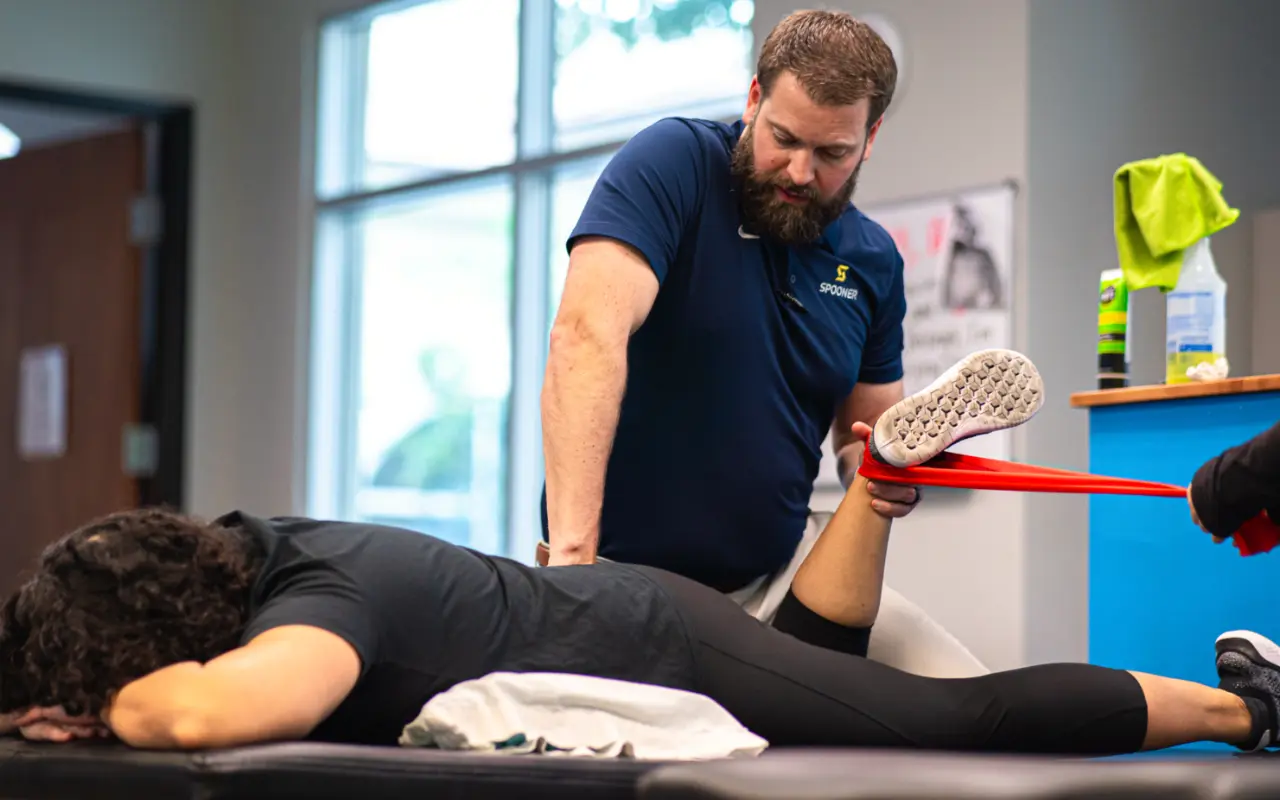By: Nick Sutton, PT, DPT, CFMT
A Certified Functional Manual Therapist (CFMT) places a heavy emphasis on the manual therapy (hands-on) portion of treatment. It presents a structured order to treat each body part and certain conditions.
The individuals who developed these techniques and procedures have spent years determining the most effective order of treatment to help patients. They also spent a lot of time evaluating the anatomy and how things are really, truly interworking and playing off each other.
To obtain the CFMT certification offered by the Institute of Physical Art (IPA), there are 8 courses that you must complete. They are so rich in information and knowledge that most people take them up to 3-4 times to master the techniques and integrate the theories. Each course is geared toward a certain body part or region, and you learn the different techniques and procedures for improving the efficiencies of that area of the body. You learn how to effectively evaluate the area to see where any inefficiencies or deficiencies lie. With this, you learn how to address these and engage the patient during treatment so they can improve their function and decrease their pain.
This approach is unique in that there is a partnership with the manual techniques used, where everything – all mobilizations – occur because both the therapist and patient are engaged in it. There is also a heavy emphasis on anatomy and relationships with human physiology that provide a different perspective. So, I will ask the patient to move certain ways and do certain things like push here and move that while I am applying a technique, and this makes the mobilization much more efficient and effective. This makes it easy to go into the next critical piece of mobilization, which is neuromuscular reeducation- retraining your brain on how to move and use the new range of motion that was just achieved.
Deciding to Get Certified
When I first came to Spooner, I was looking for courses that would help me enhance my manual therapy skills. I was directed towards courses offered by the IPA. After taking a couple, I realized just how effective they were, and I wanted to integrate this knowledge as much as I could into my practice. Once I was able to experience and see the effects of these techniques, I dove headfirst into the certification process.
I took my first course through the IPA in 2017, and I committed to getting certified in 2020. I completed the certification process in August 2023. After you have taken each course, you travel to Colorado for a week to review the material and get tested on your ability to correctly and effectively apply the material to get certified. This week was incredibly impactful. I was able to spend a week with these experts and have them critique me and give feedback, which just launched me into a different level of confidence and expertise. I am so incredibly appreciative of these individuals who have set a certain standard and have pushed the envelope in this area of physical therapy.
I am also appreciative of Spooner. Spooner encourages continued learning and provides generous funding to its employees to elevate their knowledge. This allowed me to pursue this certification, which was profound for my practice.
It’s important to push ourselves and challenge ourselves often. There’s a ripple effect in treatment- when I push myself, I can better help my patients and influence others to do the same. I encourage others to pursue continued learning whether it’s pursuing the CFMT certification or any other type of specialty training. But make sure what you pursue challenges you to apply what you learned.
Learn more about the benefits of manual therapy in “Benefits of Manual Therapy” on the Spooner Blog
How a CFMT Can Help Patients
A large motivation for me to pursue this certification was because I wanted to help my patients get the last bit of improvement that I and they were looking for. I knew there was more improvement available, but I did not know, at the time, how to access it. And how to keep the injury or dysfunction from rearing its ugly head again.
Now that I have gone through this process and have learned different approaches and techniques, I can really make a better difference in my patients’ lives. Also, this certification taught me about the inner workings of different parts of the body that make me evaluate the body differently and look at areas that I did not spend as much time looking at before.
This is all to say that I feel like I am more effective at being able to get patients to move better and feel better more effectively.
Are you ready to take control of your physical well-being and unlock the full potential of your body? Schedule an appointment today!

